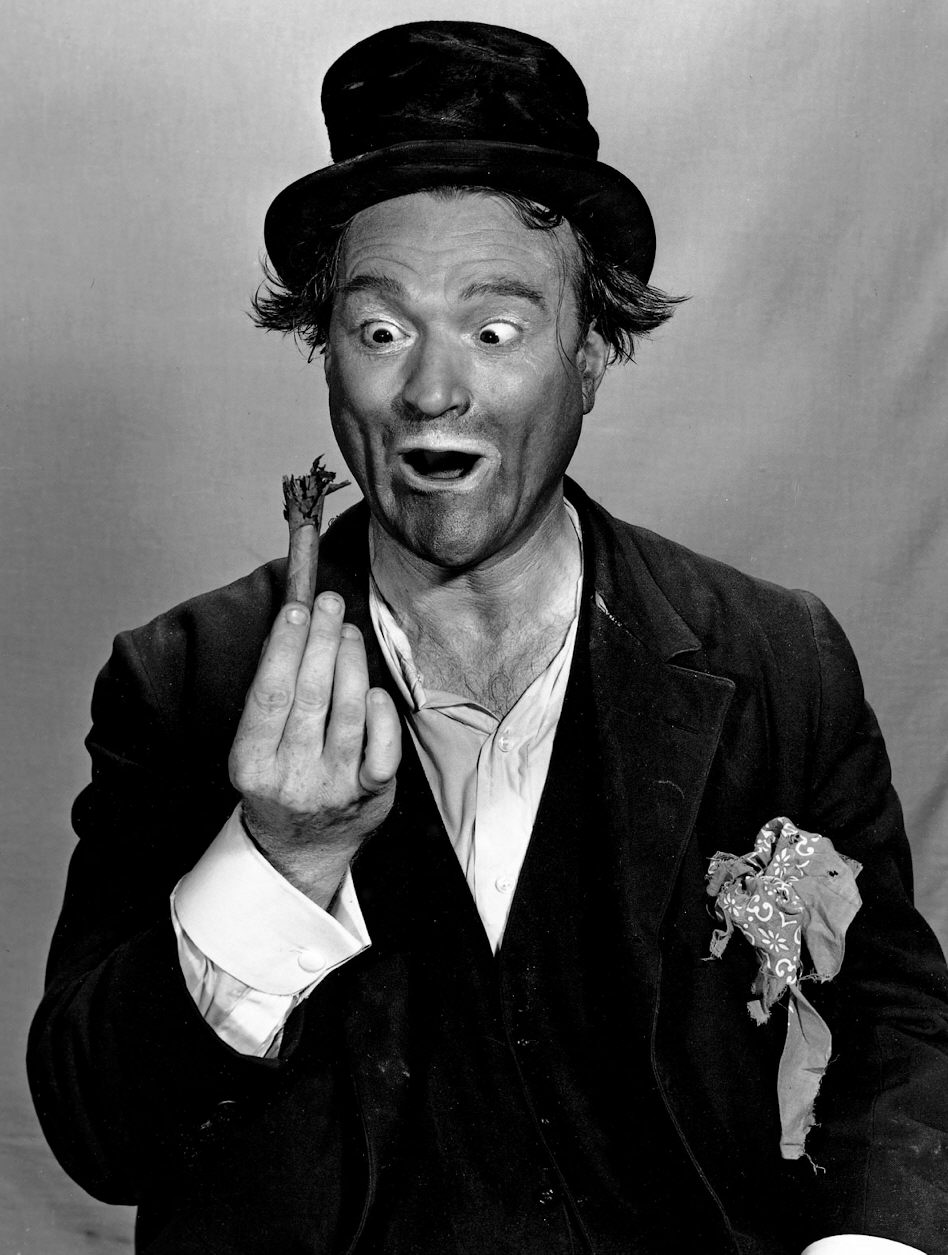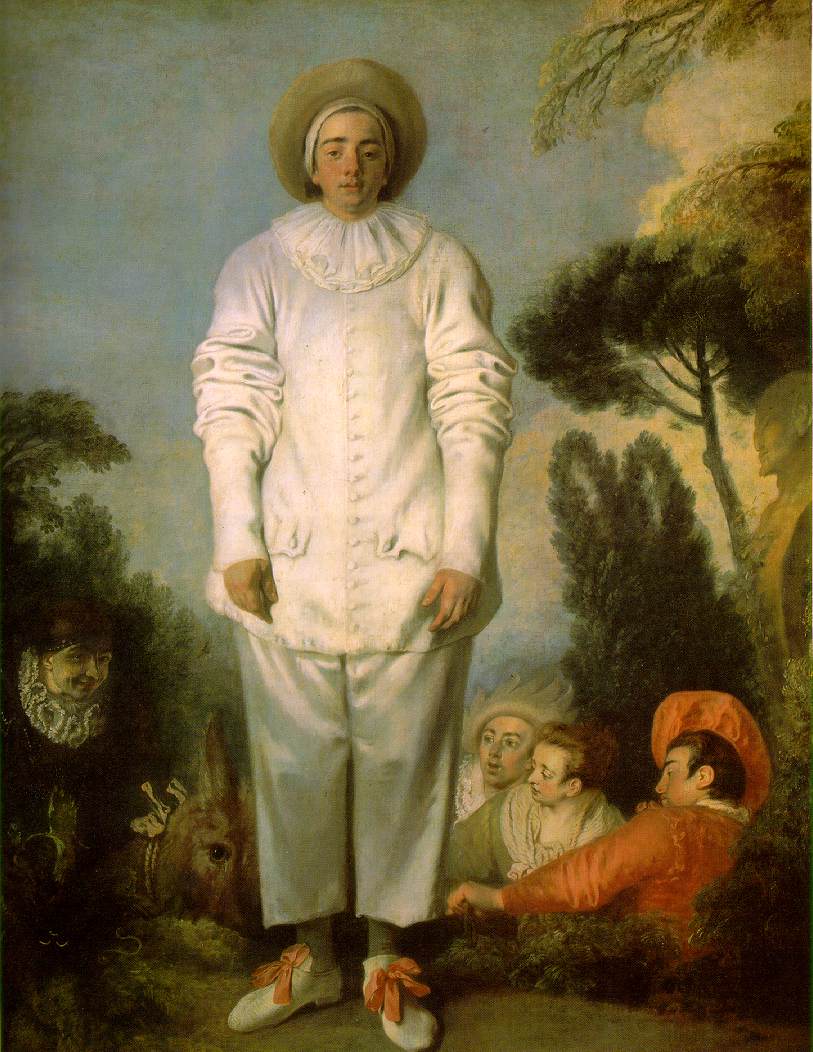Why do we need clowns? Perhaps because, in Francis Bacon’s words, “There is in human nature generally more of the fool than of the wise. ” …
Of all the images that people have created for themselves, none is as equivocal, or as timeless, as the clown. He appears, of course, in many guises- as an acrobatic monkey, like Harlequin; as a half-witted servant, like Bertoldo of the Italian commedia dell’ arte; as a melancholy tramp, like Emmett Kelly’s Weary Willie. But even more remarkable, and perplexing, than all these contradictory guises is the fact that a clown no sooner fits a convention than he violates it.

—The most incredible commedian that many commedians still mimic today…Red Skelton, born Richard Bernard Skelton and nicknamed America’s Clown Prince!—click image for source…
The moment we have described him as the butt of the joke, he turns around to do the butting. Too hopelessly awkward to climb a stepladder because his left foot is pressing on his right one, the clown begins to topple over- and then double-somersaults to the ground in a prodigy of graceful acrobatics. As soon as we have seen him for the coarse practical joker he is, he turns out to be a sighing romantic. Like man himself, the clown is a mass of grotesque inconsistencies.

—Above is the Louvre’s famous Watteau, the even larger Pierrot. The actor playing Pierrot is certainly different from the one in the Getty painting, and the foliage is much sketchier in the Getty painting. To the right of the Getty’s Pierrot is a Mezzetin who could be the same actor as in the Metropolitan Museum’s Mezzetin and the Hermitage’s Masquerade —click image for source…
There is some odd contradictions of the clown. Why should a clown, bringer of mirth, be so often a bringer of ruin? While the clown is usually a figure of fun, there is always something threatening about his fooling. Take the circus clown who rushes, all eagerness, to help the roustabouts put up the paraphernalia for the next act. The workers tug on a rope, he tangles them in it; they lift a heavy weight, he lets it fall cruely on their heads. Every object a clown touches takes on a malignant life of its own.
To children, whom clowns frighten as well as amuse, it would come as no surprise that Harlequin, the leading character of the commedia dell’ arte, began life in the Middle Ages as a figure of the Devil. The sinister is an inherent element in clowning: even the most innocent of circus clowns makes his grease paint mouth a diabolic leer.





 COMMENTS
COMMENTS